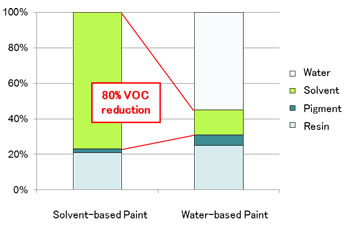Toa Road developed a pavement technology that charges electric vehicles while they are traveling and making a stop on the road. The noncontact power feeding charges EVs on the road using the feeding coil buried in the road. The power reception coil of an EV generates electricity with the magnetic energy coming from the feeding coil in the road.
The company developed a special flexible cement material to prevent the feeding coil from being damaged by heat and pressure while the road is being paved. This material made it possible to bury the feeding coil about 4 cm below the road surface. The newly-developed technology reduced the construction cost to one third of the existing technology, and it is easily applicable to the existing paved roads. Nissan cooperated with Toa Road by offering its EV.
Nissan’s noncontact charging system
Enjoy a trip in Tokyo aboard a
noncontact charging bus by Hino Motors



